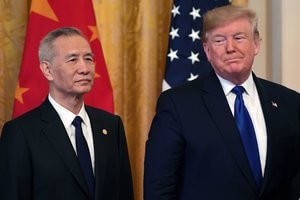Changes in Law Over the Years

As we enter into a new year and a new decade, the legal profession has drastically changed from Cislo & Thomas’ start in 1979 to today.
Over the last 40 years, sending letters has transitioned from snail mail to e-mail, urgent communication turned from faxes to text messages, and electric typewriters are nonexistent. The use of technology in the legal field has altered dramatically, as law books were replaced by online sources and document creation became automated. As Cislo & Thomas continues to provide Quality Client Care for businesses and institutions, we look into the future of how technology is changing and how that impacts the legal practice.
Over the next 40 years, how will the development of technology change law? Will MRI brain scanners recognize dishonesty, thus changing veracity of testimony or the art of negotiation? Will there be collective neuro-networks of like minds, sharing ideas and support via exclusive memberships? In the patent world, will there be configuration software that invents and develops prototypes based on identified problems and claims?
While we are not yet clear about what the future of technology holds, Cislo & Thomas will continue to stay on the cusp of legal developments in order to provide the best work to our clients.
Above: Daniel Cislo, Donald Cislo, and Chuck Thomas in the 1970’s when Cislo & Thomas LLP was born.
Prince Harry and Meghan Markle Use IP to Protect Their Royal Names
Takeaway: If planning to utilize a personal trademark, be sure to file as soon as possible, as you never know what your future holds (though your life changes may not be as dramatic as the royals of Sussex.)

Just this month the Duke and Duchess of Sussex, Prince Harry and Meghan Markle announced that they will be stepping back from their role as “senior members of the Royal Family and work to become financially independent.” Following the announcement, much speculation was raised about the couple’s recent trademark filings for SUSSEX ROYAL and SUSSEX ROYAL THE FOUNDATION OF THE DUKE AND DUCHESS OF SUSSEX. The scope for the classes of both trademark filings is broad and ranges from clothing to paper goods to charitable and financial services. The royals initially filed the applications back in June 2019 in the UK, and after approaching the six-month deadline to extend the application applied to seek trademark rights in Australia, the U.S., Canada, and the European Union.
A large amount of unique protections are afforded to members of the royal family; however, the UK Trade Marks Act restricts the use of royal names unless given consent by Her Majesty or a relevant member of the Royal family. Prior to the couple announcing their change in roles, they ensured their royal names would be afforded protections in lieu of their royal securities. However, had the couple filed for trademark protections after announcing their separating from the Royal family, the outcome may have been different.
Photo Credit: https://graziadaily.co.uk/celebrity/news/prince-harry-meghan-markle-parties
Explosion of Trademark Infringement Disputes Effecting Businesses

Takeaway: With the explosion of trademark litigation, conducting proper trademark clearance scans, searches, and investigations, and protecting your own trademark is critical to reduce the chances of trademark or domain name disputes which can cost hundreds of thousands of dollars to resolve.
According to the most recent research from CompuMark, the incidences of trademark infringement increased by 15% since 2017. As of 2019, 85% of global brands suffered a trademark infringement, as compared to 81% in 2018 and 74% in 2017. As far as instances of infringement, 45% of these included consumer confusion, 38% loss of revenue, and 37% damage to brand reputation.
Three-quarters of these trademark infringement disputes resulted in litigation, causing 40% of organizations to spend $50,000-$249,999 litigating. Trademark infringement goes well beyond business names and includes web domains, social media postings, and advertising campaigns, among others. Trademark filings have significantly grown, with a 48% increase in brands filing from last year. Filing a trademark is a great opportunity for upcoming brands to take advantage of intellectual property protection as the online marketplace continues to grow.
Trump Administration Reaches Trade Agreement with China

Takeaway: The new U.S. trade deal with China will promote the protection of IP rights, reduce tariffs on Chinese goods, and calls for China to purchase $200 billion worth of U.S. goods over the next 2 years.
After years of negotiations, the Trump Administration has reached a trade agreement with China deemed Phase One. This deal comes after a two-year trade war between China and the U.S. that has suppressed marketplace growth all over the world. The agreement calls for China to more than double its purchases from American farmers this year, who have been struggling, and make a total of $200 billion in purchases of U.S. agricultural, energy, and manufactured goods over the next two years.
Although for now $370 billion in U.S. tariffs on Chinese goods remain in place, the new deal will provide stronger protections for intellectual property rights. The Technology Transfer chapter of the agreement also addresses Chinese unfair technology transfer practices and China has agreed to quit its practice of pressuring foreign companies to transfer their technology to Chinese companies in order to maintain market access and administrative approvals.
Phase Two of the U.S./China agreement is expected to combat issues such as cyber security and China’s industrial subsidies. The Trump Administration plans for those negotiations to begin immediately, and as negotiations continue, he claims U.S. tariffs on Chinese goods will continue to decline.
Photo Credit: https://www.law360.com/articles/1234563
The Fifth Circuit Limits Statutory Damages for Copyright Infringement
Takeaway: Register your copyrighted works early!
In a recent opinion out of the Fifth Circuit Court of Appeals, the Court determined that statutory damages for copyright infringement are barred where the first mode of infringement of a copyright (reproduction) pre-dates the copyright’s registration, which would traditionally bar statutory damages under 17 U.S.C. Section 412, and a second mode of infringement (distribution) post-dated the same registration, the latter of which would traditionally be a fact pattern where statutory damages would be permitted. The issue was whether a different mode of infringement by the same defendant post-registration would permit an award of statutory damages for the second mode of infringement even though the same defendant began its infringing activity, in a different manner, before the copyright registered.
The Fifth Circuit determined that no statutory damages were available at all to the plaintiff, stating, “section 412 bars statutory damage awards when a defendant violates one of the six exclusive rights of a copyright holder preregistration and violates a different right in the same work after registration.” Slip Op. at 10. The Court did note that “if there were a substantial gap in time between preregistration and postregistration infringement,” it could be a viable distinction that would allow post-registration statutory damages. Slip Op. at 10 n.4. The opinion is here.
Cislo & Thomas LLP Spotlight

Mark Nielsen Awarded Super Lawyer®
Congratulations to Cislo & Thomas Attorney Mark D. Nielsen, on being named a 2020 Super Lawyer®!
Mark is an experienced IP litigator, effective advocate for our clients, and has been with Cislo & Thomas LLP for 16 years.
Great work, Mark!
Enjoy keeping up with IP news?



